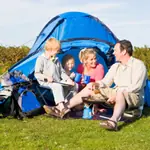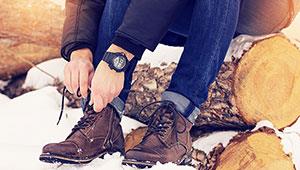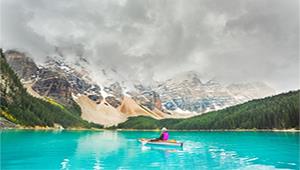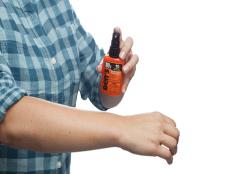
The cost and collection of gear is one of the biggest concerns that a lot of parents have when planning a family camping trip. There are almost as many opinions on camping gear as there are stars that you can see while camping in Joshua Tree National Park. The sheer volume of information on the subject can be overwhelming, but a little common sense can save you a lot of trouble and money.
A rise in the popularity of camping has lead to huge amounts of discount camping gear appearing on store shelves. Just be careful not to sacrifice performance for price. A few things to watch out for include smaller dimensions, thinner material, seams that are not reinforced or tapped to seal out water and lightweight zippers that are prone to snagging.
But, if you're just starting out, you might be pleasantly surprised to discover that you don't have to purchase a bunch of expensive camping gear. All of the major specialty outdoor stores rent gear, which creates a great opportunity to familiarize yourself with different kinds of gear before making a major purchase. The camping gear that these stores rent is actually good stuff, because quality gear is the only kind that can withstand the rigors of the rental market.
Companies offer various levels of gear rental, but it makes the most sense to rent the big-ticket items, like the tent, sleeping bags, sleeping pads and stove. Other gear, such as an ice chest, flashlights and a small hatchet for splitting firewood, are not that expensive and can be used for other activities, in addition to camping, so it makes more sense to purchase those.
The first few times you go camping, there will be a lot of what I call "I wish" moments. These occur when you realize that you cannot do something because you did not bring a tool or utensil, like a bottle opener or a small paring knife. I've camped all over the world, under some pretty harsh conditions, but after the first time camping with my family I discovered that we needed a blanket, for those cool evenings around the campfire. It is a good idea to keep a pad and pen handy to record these "I wish" moments so that you remember them when you get home.
Once you are ready to purchase your own camping gear, your first purchase will likely be a tent. Family camping tents come in several different shapes, including large rectangular cabin-style tents and freestanding dome-style tents. Both styles have their pros and cons, but cabin and dome tents are both great solutions for family camping.
Cabin tents tend to be larger and heavier than their domed cousins, but dome tents have the advantage of being freestanding structures, meaning you can precisely position them once they are erected. Cabin tents provide the most amount of usable interior space, though, because they have near-vertical sidewalls. The curved sidewalls of a dome tent limit the standing room near the edges of the floor plan, while cabin tents provide standing room over nearly all of the floor area.
Nothing is more important than a good night's sleep, so choosing a sleeping bag is a very personal decision, and one that should not be made before trying out the different options available. Some people discover that the mummy-style bags are too confining, and prefer the rectangular style. Cold sleepers, though, may prefer the additional warmth and snugness that the mummy-style bags provide.
Mummy-style bags are warmer than rectangular bags in their class because the mummy bag's tapered shape reduces the amount of air inside the bag that your body has to keep warm. This is the same reason that you should not try to use adult-size sleeping bags for your kids. The extra two feet of air space at the end of an adult-sized bag will make for some frosty toes!
Sleeping bag manufacturers continue to tighten the gap between down and synthetic insulation, from a performance standpoint, making synthetic bags a viable and economical option for family campers. Just this year, I switched to a synthetic-filled bag for the first time. It weighs less than my older bag and was half the price of an equivalent down-filled version. My wife, however, continues to use her down-filled rectangular bag, because it keeps her warm and is comfortable.
Sleeping pads are just as important as the bag itself, when it comes to getting a good night's sleep in the backcountry. The thin floor of a tent does very little to insulate you from the ground's uncanny ability to suck the warmth right out of you during the night, and even a thin foam sleeping pad can be a tremendous improvement.
Unless your plans include backpack camping, though, there is no reason to limit yourself to a foam sleeping pad. Today's self-inflating sleeping pads combine foam for insulation and air for comfort, providing you with a warm and cushy sleeping experience on all but the rockiest ground.
Camping is a great family activity, and the best way to ensure that everyone has an enjoyable experience is to use quality gear from reputable manufacturers.
Roy Scribner encourages parents to experience the great outdoors with their children at CampingBlogger.net.









Discuss This Article